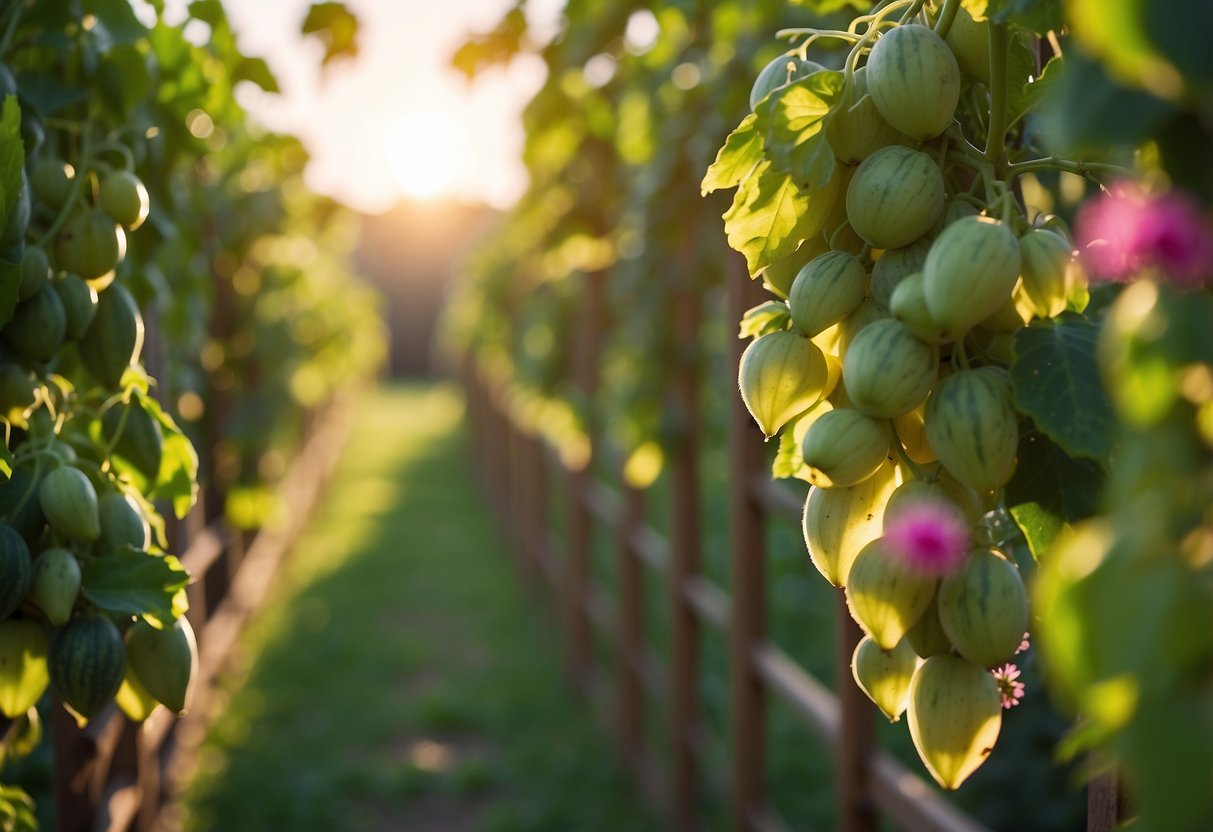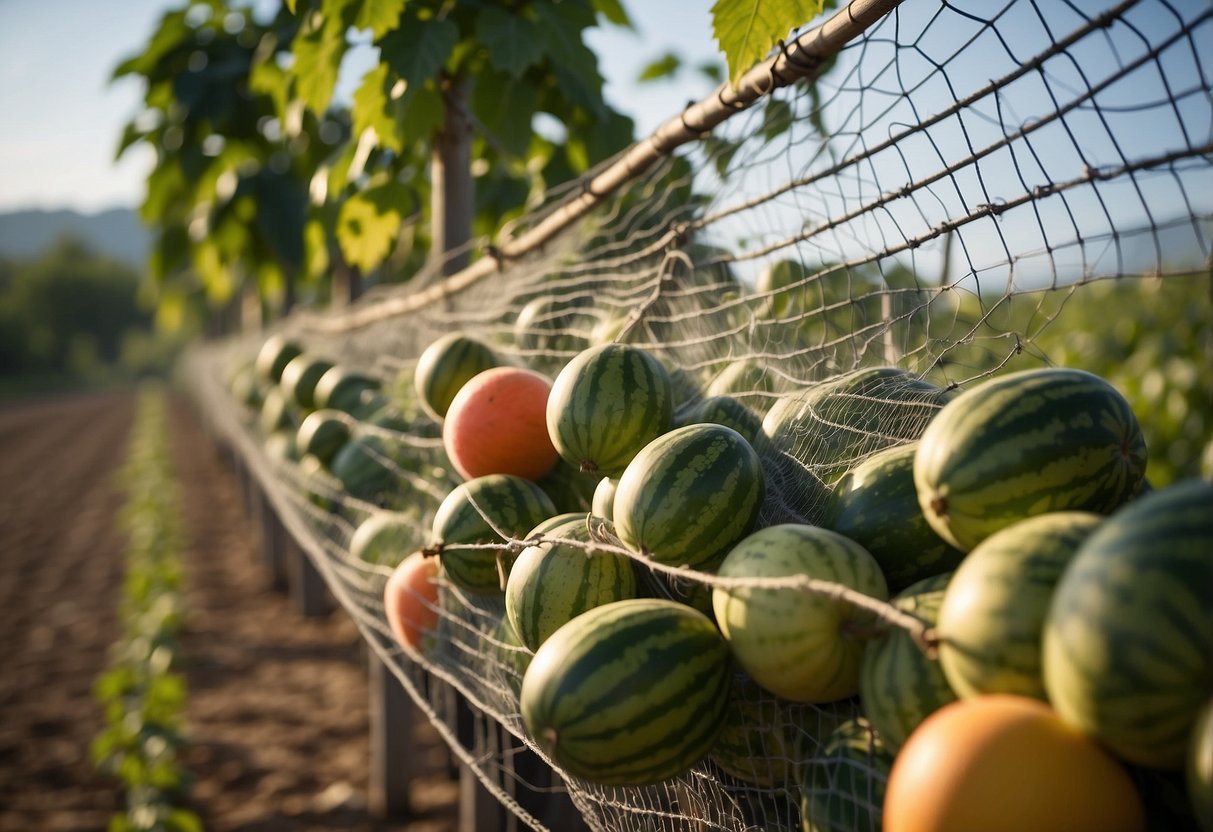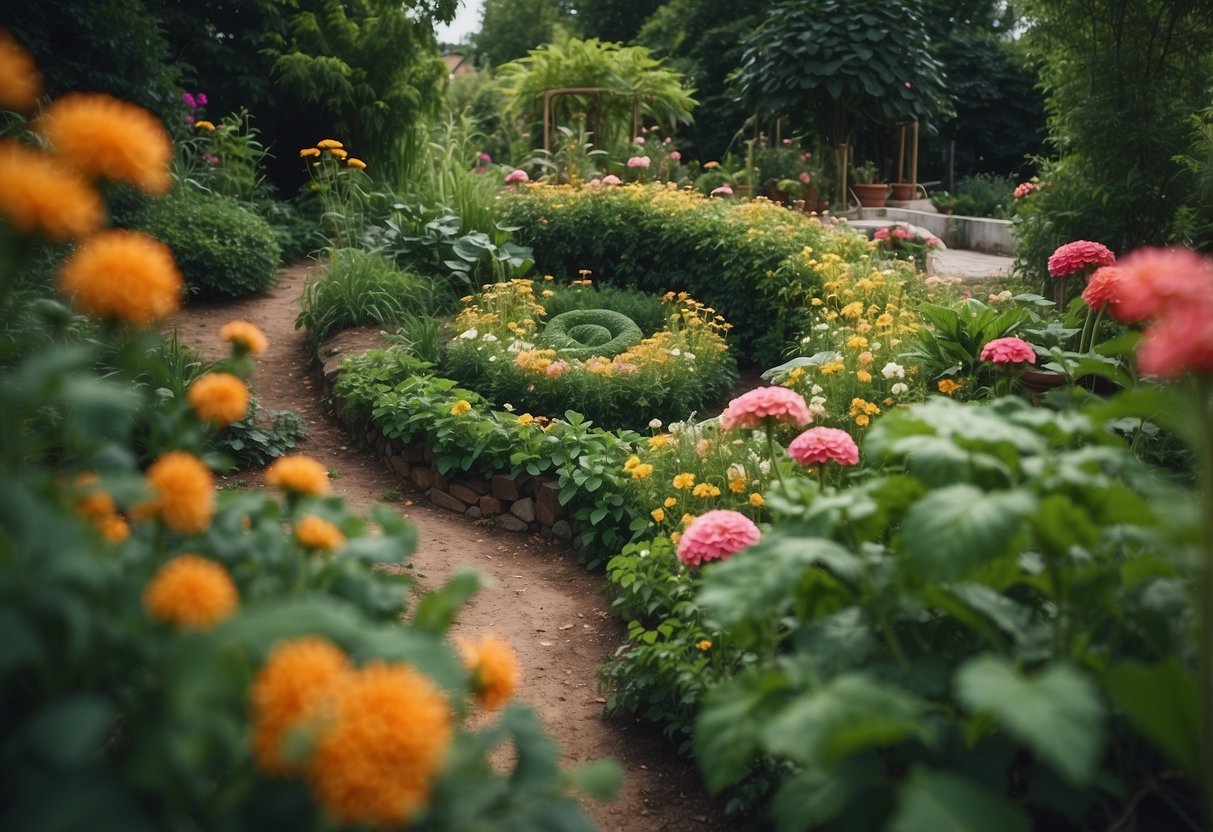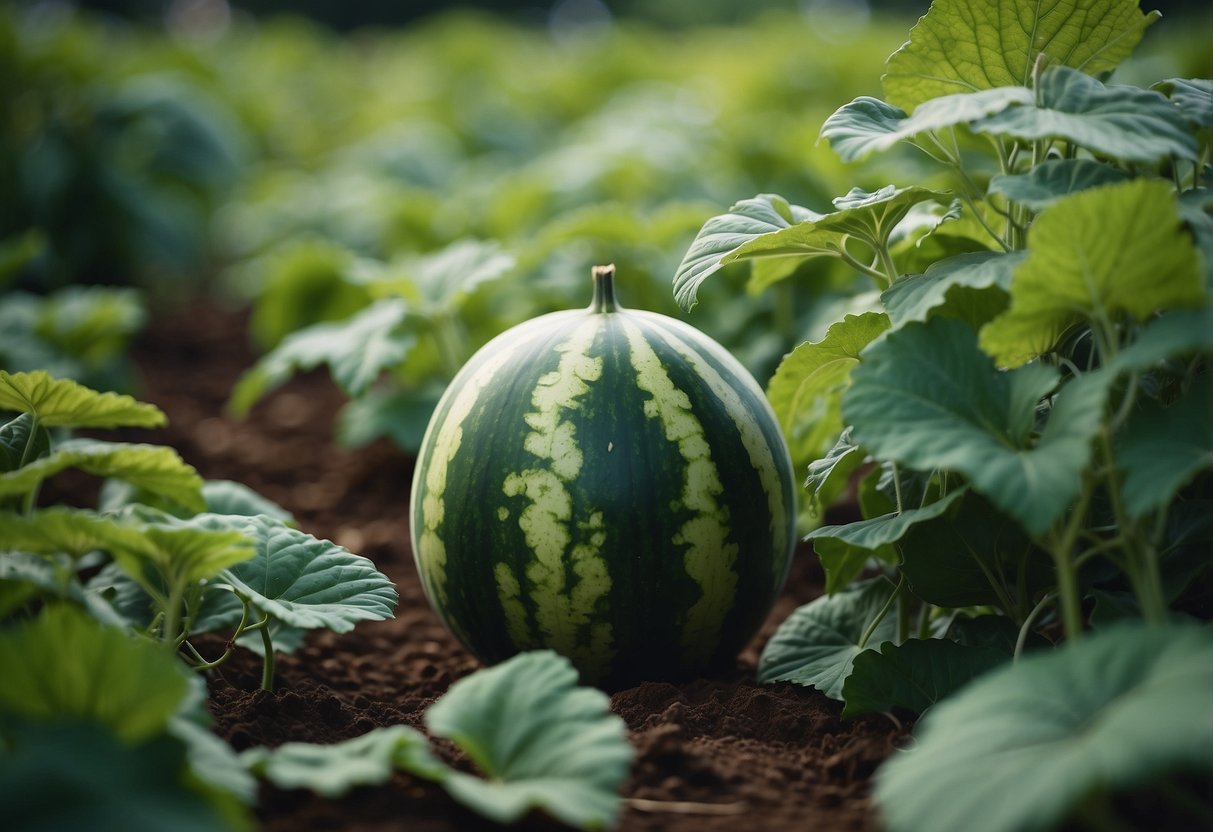Watermelon Garden Ideas: Creative Tips for a Bountiful Harvest
Thinking about adding some watermelons to your garden this year? Whether you have a sprawling backyard or a small urban space, growing watermelons can be a fun and rewarding experience.

You’ll find plenty of creative and practical ideas to help your watermelon garden thrive. From choosing the right spot to providing the right support and care, there are many ways to ensure a healthy harvest. Get ready to enjoy sweet, juicy watermelons right from your own garden!
1) Raised Garden Beds

Raised garden beds are great for growing watermelons. They let you control the soil quality and ensure good drainage.
Choose a sunny spot for your raised bed. Watermelons need at least 6-8 hours of sunlight each day to thrive.
Fill the bed with sandy, loam soil. Aim for a pH between 6.0 and 6.5 for best results.
Consider installing a trellis to support the watermelon vines. This helps save space and allows for easier harvesting.
2) Trellises for Vertical Growth

Using trellises to grow watermelons vertically can save a lot of space in your garden. They help keep the fruits off the ground, which reduces the risk of rot and pests.
You can make a simple A-frame trellis from wood and wire. Another option is a wooden bridge trellis, which looks nice and supports vines well.
Even an old fence or a chain-link fence can work as a trellis. Just make sure it’s strong enough to handle the weight of growing melons. For more ideas, check out these watermelon trellis ideas.
3) Mulch for Moisture Retention

Using mulch can really help your watermelon plants thrive. It keeps the soil moist by reducing water evaporation. This means you won’t have to water your plants as often.
One great option is black plastic sheeting. It warms the soil and retains moisture. Just be sure to secure the edges with garden staples or small rocks.
4) Companion Planting with Nasturtiums

Nasturtiums make excellent companions for your watermelon garden. They attract beneficial insects that help pollinate your plants.
Nasturtiums also act as a trap crop. They attract pests like aphids, keeping them away from your watermelons. This can help protect your fruit.
Plus, nasturtiums add a splash of color to your garden. They have bright flowers that can make your space look lively and vibrant.
5) Drip Irrigation System

A drip irrigation system is perfect for your watermelon garden. It delivers water directly to the roots, which helps in reducing water wastage. This method also keeps the leaves dry, preventing diseases.
Using drip irrigation minimizes weed growth by focusing water on the plants. Building your own system can save you money compared to store-bought options. Your watermelons will thank you!
6) Compost for Soil Enrichment

Using watermelon rinds for compost is a great way to enrich your soil. These rinds are rich in nitrogen, making them perfect for a balanced compost mix.
Mix the rinds with “brown” compost ingredients like dry leaves or straw. Aim for about 3 parts brown material to 1 part green material for the best results.
By composting watermelon rinds, you reduce waste and create nutrient-rich compost for your garden. This simple step helps keep your plants healthy and thriving.
Learn more about composting watermelon rinds from Rural Sprout and All Things Backyard.
7) Bird Netting for Protection

Bird netting is a great way to keep birds away from your watermelons.
Start by measuring the area you want to cover. Use garden hoops to create a frame around your plants.
Drape the netting over the frame and secure it with ties or clips. This will stop birds from reaching your watermelons while still allowing sunlight to reach the plants.
Check the netting regularly for any tears or gaps to ensure it remains effective.
8) Organic Fertilizers

Using organic fertilizers can help your watermelon garden thrive. They improve soil health and provide essential nutrients for plant growth.
Compost is a fantastic choice. It enriches the soil and boosts water retention.
Fish emulsion is rich in nitrogen and supports strong leaf growth.
Bone meal adds phosphorus, promoting root development.
Blood meal is a great nitrogen source and helps in greening up your plants.
With these options, you’ll have a vibrant and fruitful watermelon garden.
9) Row Covers for Pest Control

Row covers are a great way to keep pests away from your watermelon plants. They are made of lightweight fabric and are easy to use.
Simply drape the row cover over your plants and secure the edges with rocks or garden staples. This creates a barrier that helps protect against insects like aphids and beetles.
Using row covers can also help in regulating the temperature and protecting your plants from harsh weather conditions. This simple and affordable method ensures your watermelons grow healthy and strong through the season. For detailed instructions, you can visit this guide.
10) Herb Spirals

Creating an herb spiral in your watermelon garden can be a wonderful addition. Herb spirals use vertical space, allowing you to grow more plants in a smaller area.
To build an herb spiral, start with larger stones at the base and use smaller ones as you move up. Fill the gaps with gravel to ensure stability.
Choose herbs that suit different parts of the spiral. For instance, rosemary and thyme do well at the top where it’s drier, while parsley and chives thrive at the bottom where it’s more moist.
This setup not only looks attractive but also makes harvesting herbs convenient. Happy gardening!
Choosing the Right Location

Finding an ideal spot for your watermelon garden is crucial for a successful harvest. You need to focus on getting plenty of sunlight and ensuring good soil conditions for your plants.
Sunlight Requirements
Watermelons love sunlight. They grow best in areas that get at least 8-10 hours of direct sunlight each day. A sunny spot in your garden will help the plants produce sweet, juicy fruits. Shade can limit the growth and sweetness of your watermelons.
Important Tips:
- Avoid planting watermelons near tall trees or buildings that block sunlight.
- Keep the plants spaced out to prevent shadowing each other.
- South-facing areas usually receive the most sunlight.
Soil Conditions
Good soil is essential for healthy watermelon plants. Watermelons prefer well-drained, sandy loam soil rich in organic matter. The pH level should be between 6.0 and 6.8 to maximize nutrient absorption.
Important Tips:
- Use compost or aged manure to improve soil fertility.
- Avoid water-logged areas to prevent root rot.
- Regularly test your soil to adjust nutrient levels as needed.
By meeting these sunlight and soil needs, you’ll give your watermelons the best chance to thrive and produce delicious fruit.
Planting and Growing Watermelons

Growing watermelons requires choosing the right variety, using proper planting techniques, and ensuring adequate water and nutrients. By focusing on these areas, you can enjoy a bountiful harvest of delicious watermelons.
Selecting Watermelon Varieties
Start by choosing a watermelon variety that suits your climate and garden space. Sugar Baby and Icebox are great for small gardens due to their compact size. For large spaces, consider Crimson Sweet or Jubilee which produce bigger fruits.
Seedless varieties like Tiffany are popular for their convenience, although they need a seeded variety for pollination. Always check the days to maturity on the seed packet to plan your growing season.
Planting Techniques
Prepare the soil by mixing in 1-2 inches of compost to enrich it with nutrients. Plant seeds about half an inch deep in small hills or rows, spaced 36 inches apart. In hills, place 6-8 seeds per mound; in rows, space seeds 2-3 seeds every 36 inches.
For colder climates, start seeds indoors using pots covered with a half-inch potting mix, next to a sunny window or under a grow light. This gives the seeds a head start and ensures quicker germination.
Watering and Nutrition
Watering is crucial from planting until the fruits form. Watermelon plants need about 1 to 2 inches of water per week. Water at the vine’s base in the morning to avoid wet leaves and diseases. Mulch around the plants to retain moisture and keep roots cool.
Feed plants with a balanced fertilizer, rich in nitrogen initially to support vine growth. Once flowers bloom, switch to a phosphorus and potassium-rich fertilizer to promote fruit development. Proper nutrition ensures robust vines and sweeter watermelons.
Thriving watermelon plants rely on these key gardening techniques. By selecting the right variety, planting correctly, and maintaining proper water and nutrients, you’ll be on your way to growing a successful watermelon garden.
Managing Pests and Diseases

Taking care of your watermelon plants means keeping an eye out for pests and diseases. By knowing what to expect and how to prevent problems, you can keep your garden healthy and your harvest plentiful.
Common Pests
Watermelon plants can attract several pests. Aphids are small insects that suck sap from the leaves, causing them to curl and yellow. Cucumber beetles chew on the leaves and can spread bacterial wilt. Spider mites spin webs on the underside of leaves and create yellow spots.
Your seedlings are especially vulnerable. Keep a close watch on them as they grow. Thrips are another pest that can damage watermelon plants by feeding on the flowers and young fruit. Applying neem oil can help control many of these pests.
Preventive Measures
Prevention is key to keeping your watermelon plants healthy. Planting your watermelons in a well-drained area with lots of sunlight can reduce the risk of disease. Regularly inspect your plants for any signs of pests or disease.
Encourage beneficial insects like ladybugs and lacewings to help control pests naturally. Using clean tools and rotating your crops each season can also prevent the spread of diseases. Watermelon plants thrive when they are watered in the morning. This helps the soil dry out during the day, reducing the risk of fungal disease.
Learn more about managing pests and diseases here.







